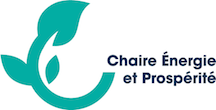Ut pellentesque libero ac magna ornare, eget dictum orci ultricies. In quis tortor semper, luctus dolor ut, adipiscing eros. Maecenas sed pharetra neque. Nullam id ipsum id quam ultrices luctus. Donec adipiscing augue non placerat consectetur. Aliquam erat volutpat.
Dans son livre « L’Emballement du monde », l’ingénieur et économiste Victor Court propose d’explorer les liens historiques entre énergie et domination au sein des sociétés humaines. Le JDD en publie un extrait.
À partir de la littérature scientifique existante, l’article examine les propriétés que l’on peut attendre de la carte carbone dans cinq dimensions : intégrité environnementale, efficacité, équité, fonctionnement et acceptabilité. Il compare systématiquement les propriétés de la carte carbone avec celles de la taxe carbone et avec celles que revendiquent ses promoteurs.
L’objectif de cet article est d’étudier la pollution numérique et de s’interroger sur la possibilité d’instaurer des certificats de sobriété numérique qui auraient pour vocation de promouvoir des investissements ou des changements de pratiques en matière de sobriété numérique.
A first version of an econometric SFC model of the French economy based on the accumulation accounts from INSEE and on the financial accounts of the Bank of France has been presented (Mazier and Reyes, 2022). It provides the overall structure, the main equations and the basic properties of the model. This paper is based on the same model with some improvements.
Reyes and Mazier present a first version of an econometric stock flow consistent (SFC) model of the French economy – an aggregate model with a single product, five domestic agents and the rest of the world with a complete representation of real and financial sectors in stocks and flows.
Un premier atelier tenu le 8 avril dernier a souligné les difficultés d’articulation entre les scénarios bas carbone et la mise en œuvre des innovations complexes dans la stratégie des entreprises. Ce deuxième atelier explorerait comment ces démarches top down et bottom up peuvent être abordées de manière complémentaire.
Séminaire en présence d'Adam George (SOAS, University of London). Adam George présente un modèle macroéconomique SFC environnemental britannique intégrant émissions de CO2 et investissements verts de tous les agents économiques. Le modèle trimestriel analyse l'impact des politiques énergétiques selon le rapport capital vert/capital conventionnel. Quatre scénarios fiscaux verts sont testés (2022-2035) : taxe carbone, investissement...
Le laboratoire GAEL (Grenoble Applied Economics Laboratory) et la Chaire Energie et Prospérité organisent un workshop sur l’économie de la bioénergie les jeudi 9 et vendredi 10 octobre 2025 sur le campus universitaire de Grenoble.

